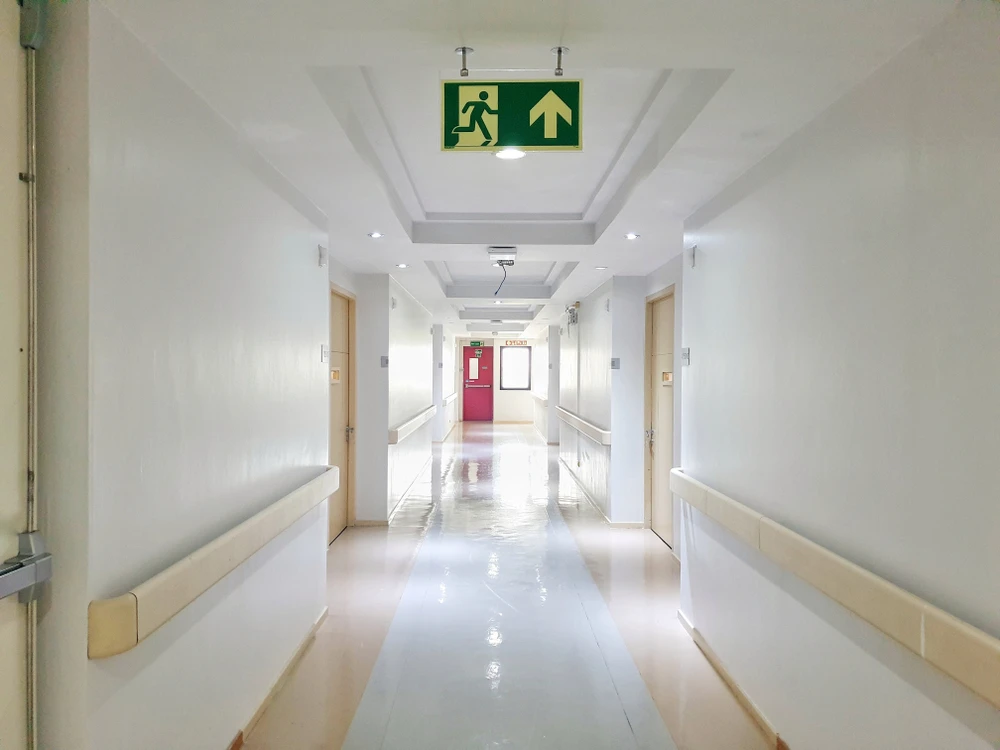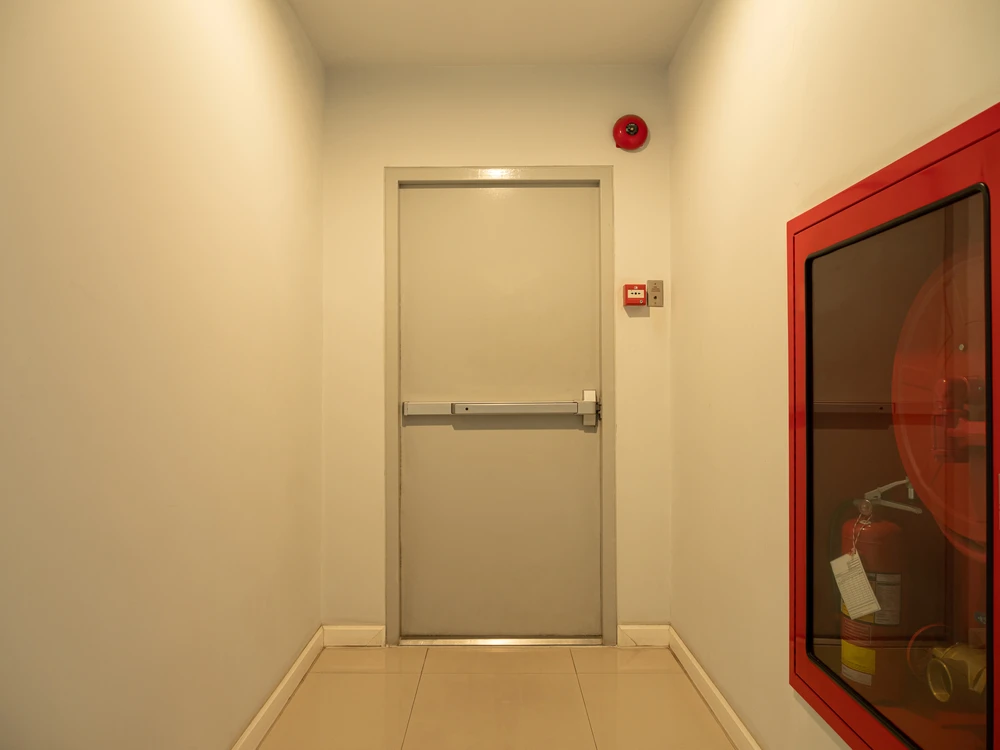Fire safety in healthcare and aged care environments is not just a regulatory requirement; it is a moral and operational responsibility. These facilities care for people who rely on others for safety: patients, residents and staff who must be protected even when they cannot protect themselves. At IECC, your trusted passive fire specialist, we understand that behind every compliance measure is a human life depending on the integrity of the building.
Unlike active fire systems, passive protection is built into the very structure of a facility, creating barriers that compartmentalise fire and smoke. This article explores how care providers can ensure their buildings are maintained and documented to the highest standards of passive fire safety.

Medical facilities face a unique set of fire safety challenges. They’re not like offices or residential complexes where evacuation can be quick and straightforward. Instead, these buildings often contain immobile patients, connected to life-support systems or unable to follow evacuation instructions. Moreover, hospitals and aged care homes are complex ecosystems filled with multiple services, all of which can breach fire barriers if not properly sealed. Managing these competing priorities while maintaining round-the-clock operations demands precision and expertise.
In clinical and aged care environments, the safety of patients and residents must coexist with continuous clinical care. Staff can’t simply evacuate everyone at the sound of an alarm, especially when many occupants are frail, immobile or dependent on life-support systems. Every decision in those moments must balance urgency with compassion, protecting lives without disrupting vital care. This makes balancing operational care with strict compliance requirements one of the greatest challenges in fire safety management.
Hospitals and aged care buildings are among the most service-heavy structures in the built environment. Electrical cabling, communication lines, oxygen and vacuum systems, medical gases and water supply all converge within the same walls, floors and ceilings. With each new technological upgrade or renovation, there’s a risk of breaching existing fire compartments if service openings aren’t properly resealed.
In these settings, a localised fire can have far-reaching consequences if it disrupts essential infrastructure. Systems like power supply, air conditioning, data networks and oxygen lines are interconnected, meaning a failure in one compartment can quickly compromise the operation of an entire ward or even a whole facility. The objective is simple: preserve continuity of care even under emergency conditions.
Healthcare settings save lives through medical care and protect them through intelligent construction. These systems form the unseen framework that allows this to happen. They don’t rely on activation or manual response; they’re always on guard, built directly into the walls, ceilings and floors of the facility. What makes passive protection vital is its role in preserving time. Fire containment systems help ensure that fires remain confined, reducing damage to essential infrastructure and maintaining safe evacuation routes even under extreme pressure.
Fire-rated building elements form the structural backbone of a facility’s fire safety framework strategy. They compartmentalise fire and smoke, containing them within a specific area long enough to allow safe evacuation and emergency response. In these environments, where patients may not be able to move quickly, these barriers are critical to maintaining life safety and service continuity.
Fire doors are among the most visible components of a structural fire defence system. In hospitals and aged care facilities, these doors separate spaces and act as barriers that maintain the integrity of fire compartments. A properly installed fire door assembly, including the frame, seals and closers, prevents the passage of flame, heat and smoke, effectively extending the safe time for occupants to escape.
Air circulation is vital in clinical environments, but it also introduces a potential pathway for smoke and fire to travel between compartments. This is where fire dampers and duct sealing come into play. These components automatically block the passage of flame and hot gases via HVAC systems, preserving the fire rating of walls and shafts that ducts pass through. They must be installed within approved fire-rated ductwork and sealed with non-combustible materials to prevent smoke leakage.
Service penetrations are one of the most common weak points in a building’s fire defence system. Every pipe, cable or conduit that passes through a wall or floor creates an opening that can allow fire and smoke to spread. Fire-stopping systems restore the integrity of these barriers by sealing around these services with approved, tested materials, such as intumescent sealants, wraps, collars and pillows, which are commonly used to expand and fill voids under heat exposure, effectively blocking flames and gases.
Health environments must balance patient safety, operational continuity and stringent legislative obligations, all within a framework that evolves as new materials and technologies emerge. Every wall, penetration and system must perform and meet strict verification and standards. It involves model coordination, system testing, ongoing upkeep and traceable archives to demonstrate that every passive fire element performs to its intended FRL. From fire door tags to digital inspection records, each element contributes to a transparent chain of evidence that protects both the facility and its occupants.
Passive fire protection is governed by a network of national and state-level regulations to safeguard life, property and continuity of care. These standards are non-negotiable; they form the legal and technical backbone of every model, construction and upkeep decision. To achieve compliance, multiple Australian standards must be applied together, including:
Behind every compliant building is a network of qualified professionals who interpret, validate and document fire safety measures. Among them, fire engineers and certifiers play a role in bridging intent and performance. Once construction or modification is complete, certifiers verify that all built-in fire safety measures comply with standards. Their role includes reviewing inspection reports, manufacturer certifications and on-site test results before issuing a Certificate of Compliance or Occupancy Certificate.
In modern construction and facility management, traceable archives are as important as the installation itself. Regulators and auditors demand proof that every passive fire element has been tested, approved, installed correctly and maintained throughout its service life. This requires meticulous record-keeping and traceability from project inception to ongoing audits.

Certain conditions change how fire safety must be managed and maintained. Every wall, door, seal and joint contributes to a network of protection that buys precious minutes; time that can mean the difference between rescue and tragedy for someone who can’t walk, see or breathe without assistance. This approach ensures that the safety of patients and residents remains uncompromised, even during renovations, emergencies or power outages.
Zoned compartmentation is the foundation of fire safety in an aged care model. Instead of relying solely on full evacuation, this approach divides a facility into smaller, self-contained fire compartments. These zones contain fire and smoke within a specific area, giving staff time to relocate patients horizontally to adjacent safe zones rather than evacuating the entire building.
While flames are dangerous, smoke is often the deadliest threat in these spaces. Even in areas untouched by fire, toxic gases can spread rapidly through ventilation systems, corridors and ceiling voids, endangering patients who are unable to move or are dependent on oxygen. For vulnerable occupants, maintaining breathable, clean air isn’t just a safety measure; it’s a lifeline. Maintaining clean, breathable air during an incident is therefore a primary objective of passive fire design.
Passive and active fire protection systems are not independent; they are complementary layers of defence. While passive systems focus on containment, active systems such as sprinklers, alarms and smoke extraction respond dynamically to suppress the fire and alert occupants. Seamless coordination between these systems ensures maximum protection and minimal disruption.
Fire safety doesn’t end with construction or certification; it’s a continuous process of verification, record-keeping and improvement. The integrity of passive fire barriers can deteriorate due to work, renovations, environmental conditions or simple wear and tear. For this reason, annual audits and thorough records are not only mandated by Australian standards but are also essential for maintaining long-term safety and compliance.
Routine assessments are the cornerstone of maintaining PFP integrity. These ensure that every barrier, seal and structural element continues to meet the required FRL and that no part of the system has been compromised through wear, refurbishment or unreported system care. For high-risk buildings like hospitals, annual reviews are not enough on their own; many choose to conduct quarterly visual assessments to address minor defects before they escalate into compliance breaches.
Paper-based inspection logs are no longer enough. The complexity of large-scale infrastructure demands precise, traceable and easily accessible digital records. Digital logs offer a transparent and efficient way to manage ongoing fire safety compliance, reducing administrative overhead and guaranteeing real-time accountability. This allows facility managers, engineers and auditors to instantly verify the compliance status of any element during reviews or audits.
Identifying a fire protection issue during inspection is only the first step; how quickly and effectively a facility responds is what defines its true safety culture. Remember, even minor defects must be rectified without delay. Common defects may include unsealed new penetrations from recent service works, cracked or missing sealants, worn door seals or blocked access panels for dampers.
From nurses and maintenance staff to facility managers and administrators, everyone has a role in proving that fire safety protocols are respected, barriers remain intact and emergency procedures are carried out effectively. Collective vigilance transforms compliance into a living, breathing culture of accountability and care. Moreover, fostering a proactive safety culture means staying adaptable. As hospitals and aged care spaces evolve, adding new wings, technologies and services, fire safety practices must evolve too.
No matter how advanced a facility’s fire protection systems are, their effectiveness depends on the people who use and maintain them. Staff awareness and training are indispensable. Every member of the team must understand how fire safety systems work and what their individual responsibilities are during an emergency. Remember, training shouldn’t be limited to annual drills; it must be an ongoing education process that adapts to staff turnover, building upgrades and new technology.
Fire safety is inherently collaborative. It requires the expertise of architects, engineers, contractors and clinical staff working together to ensure every element. In facilities where departments operate in silos, communication gaps often lead to unintentional safety breaches, such as unsealed penetrations after service upgrades or propped-open fire doors in high-traffic corridors.
Fire safety isn’t a one-time achievement; it’s a living system that evolves with the facility. As these environments expand, technologies change and regulations tighten. This means regularly reviewing policies, updating training materials and using inspection data to identify trends before they turn into risks. By leveraging digital records, facilities can analyse recurring issues and implement preventive strategies.
Lives depend on the integrity of every wall, floor and seal. Fire containment systems form the backbone of safety, ensuring fires are contained long enough for rescue and response. At IECC, we help healthcare providers achieve peace of mind through tested materials, certified installations and proactive servicing. Because in these environments, fire safety isn’t optional; it’s essential.